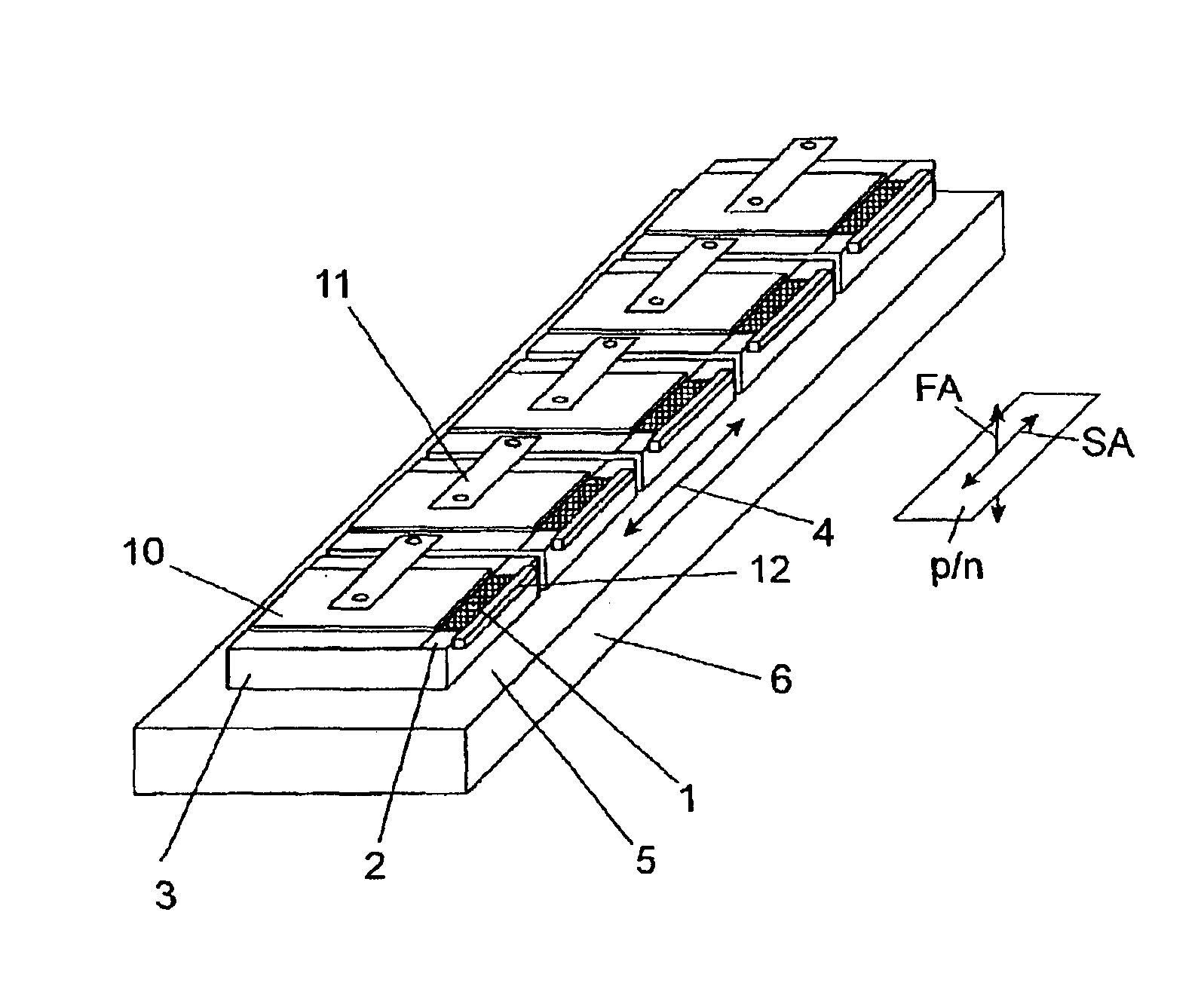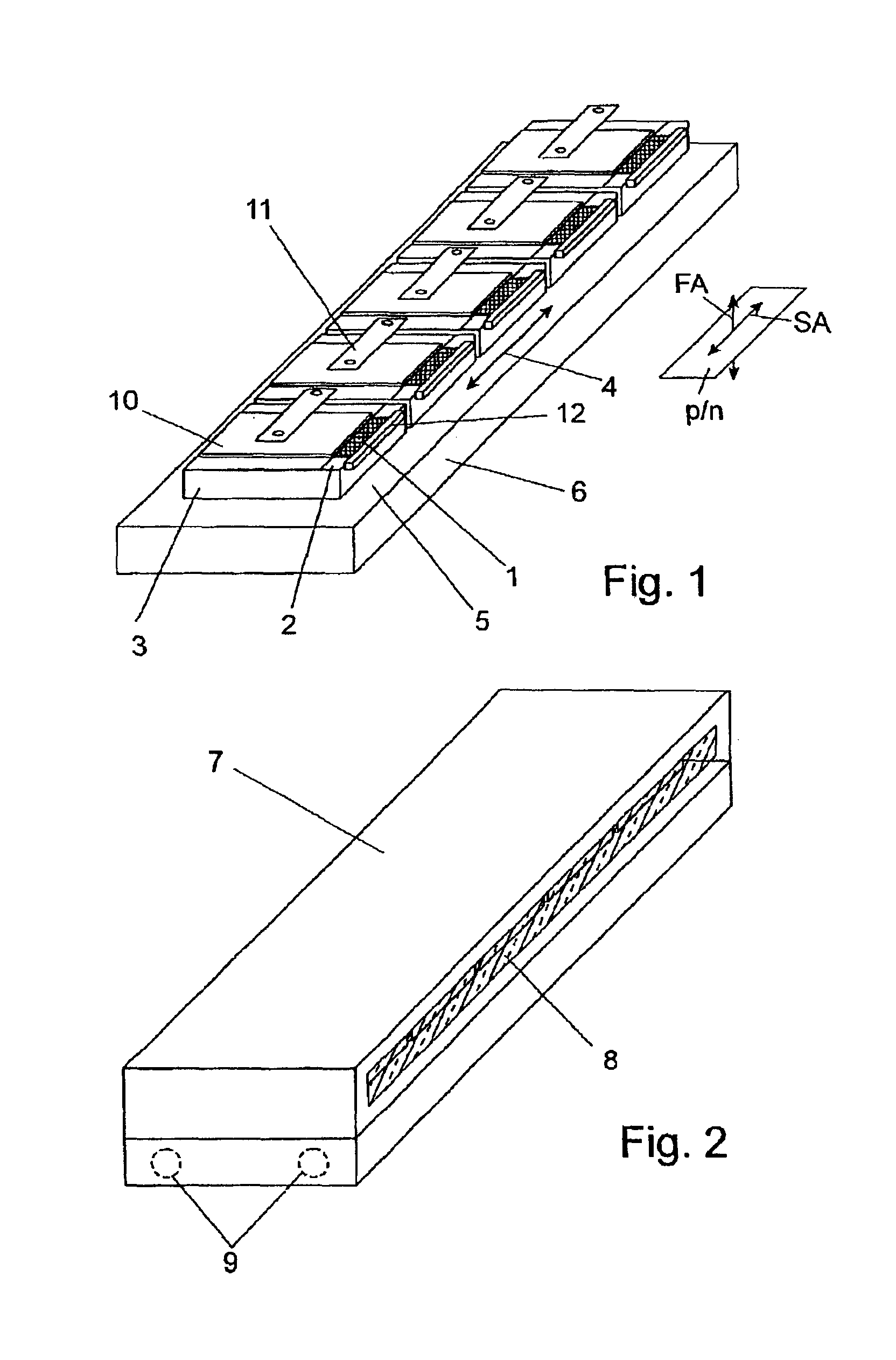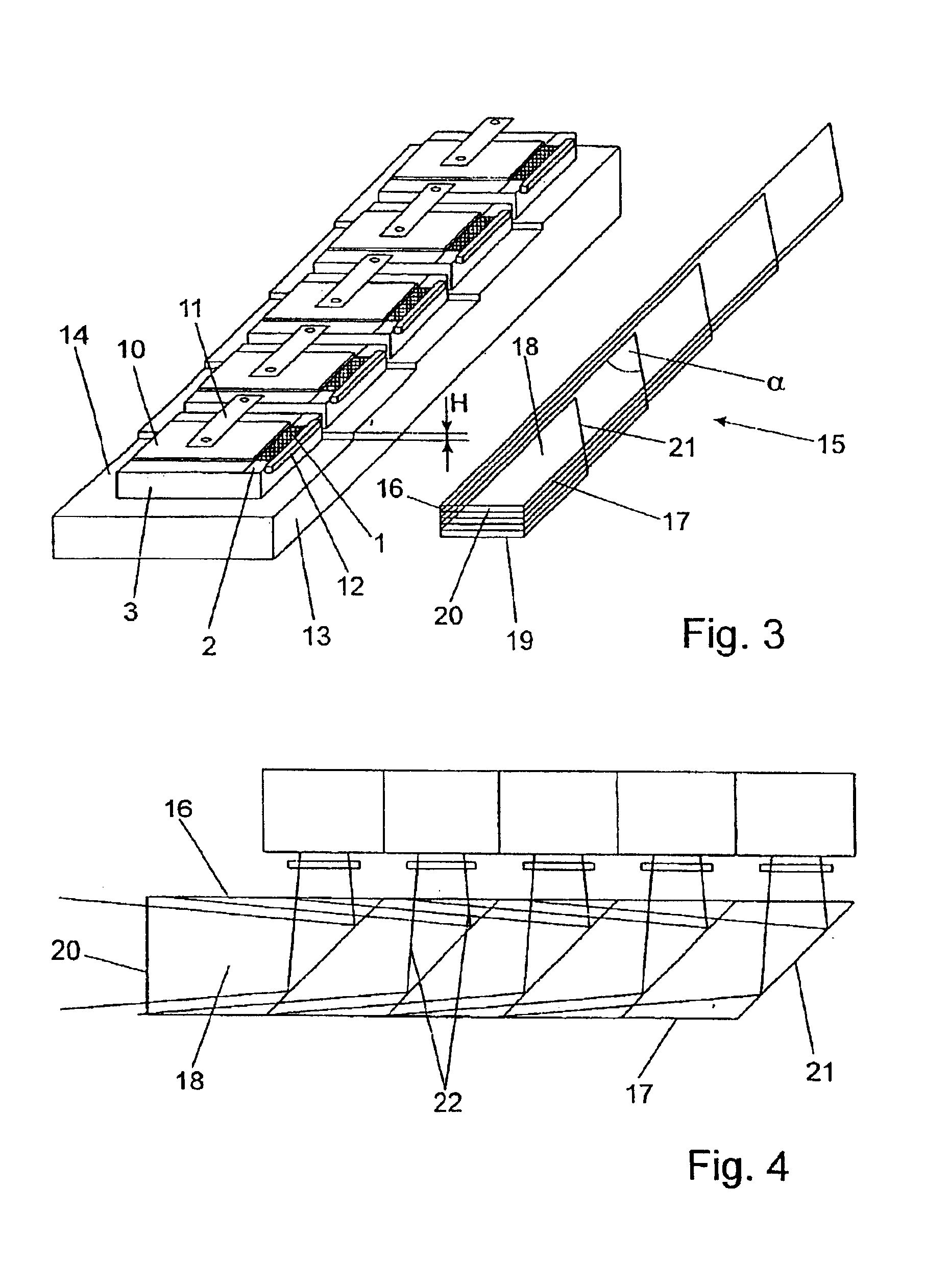Diode laser arrangement with a plurality of diode laser arrays
a diode laser and array technology, applied in lasers, laser optical devices, laser construction details, etc., can solve the problems of high demands on liquid-conducting materials, high demands on microchannel heatsinks, and seals
- Summary
- Abstract
- Description
- Claims
- Application Information
AI Technical Summary
Benefits of technology
Problems solved by technology
Method used
Image
Examples
Embodiment Construction
[0039]In the arrangement shown in FIG. 1, diode lasers 1 are provided in the form of diode laser arrays or diode laser bars, each of which is connected to a thermal contact surface 2 of a separate, heat-spreading carrier 3 of copper for dissipating heat. For the sake of clarity, the Figures always show only one of the elements of identical construction. The diode lasers 1 have emission regions which are elongated in one direction, designated by an arrow 4, parallel to the thermal contact surfaces 2. For this reason, the carriers 3 are arranged adjacent to one another and fastened to a cooling surface 5 of a common cooling element 6 so as to be electrically insulated, but with low heat transmission resistance, such that the cooling surface 5 extends parallel to the thermal contact surfaces 2 and the diode lasers 1 lie in a row in their direction of extension and accordingly form a radiation source with a line-shaped laser beam bundle profile. Further, the diode lasers 1 are arranged ...
PUM
 Login to View More
Login to View More Abstract
Description
Claims
Application Information
 Login to View More
Login to View More - R&D
- Intellectual Property
- Life Sciences
- Materials
- Tech Scout
- Unparalleled Data Quality
- Higher Quality Content
- 60% Fewer Hallucinations
Browse by: Latest US Patents, China's latest patents, Technical Efficacy Thesaurus, Application Domain, Technology Topic, Popular Technical Reports.
© 2025 PatSnap. All rights reserved.Legal|Privacy policy|Modern Slavery Act Transparency Statement|Sitemap|About US| Contact US: help@patsnap.com



